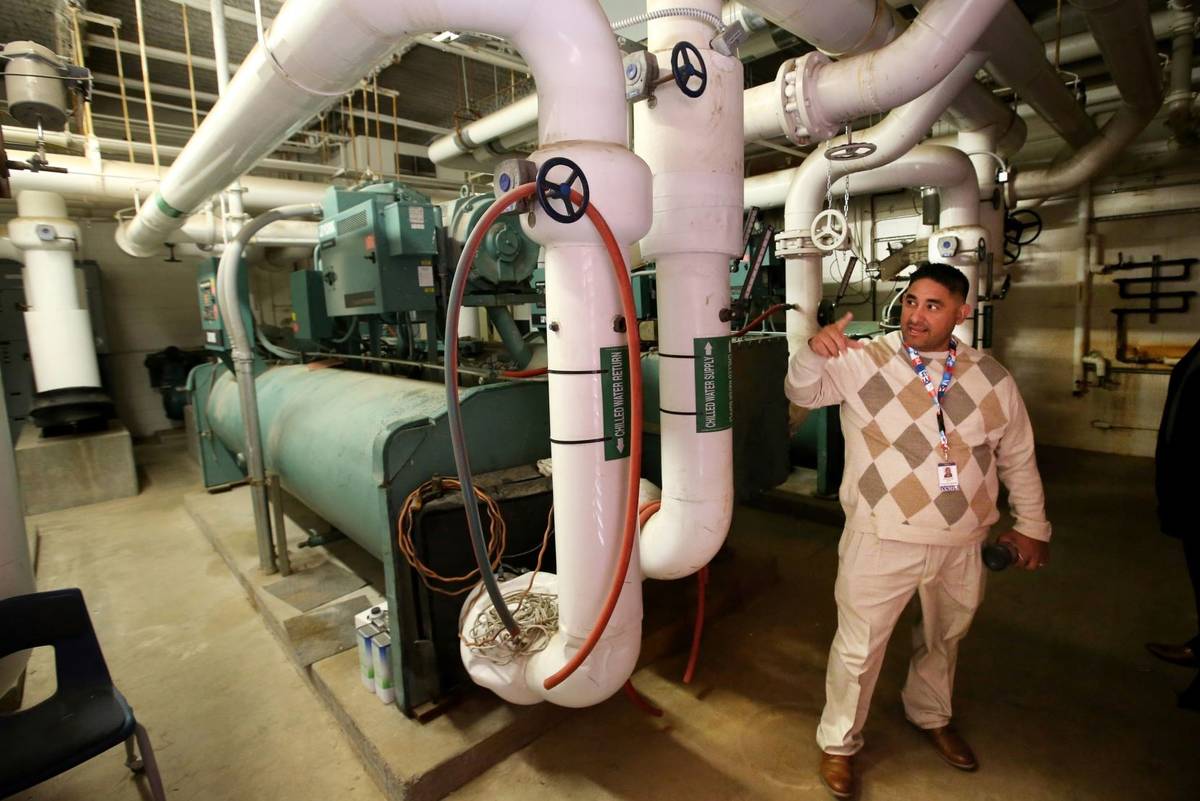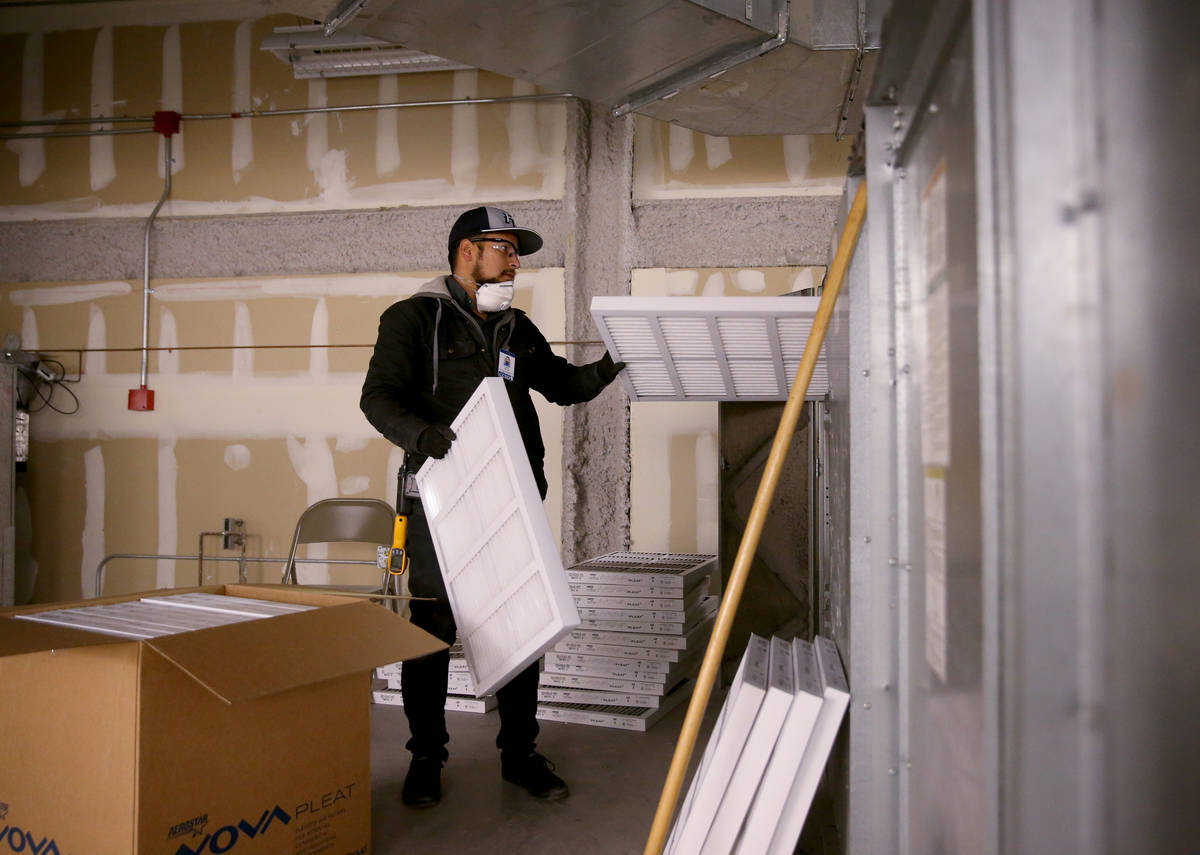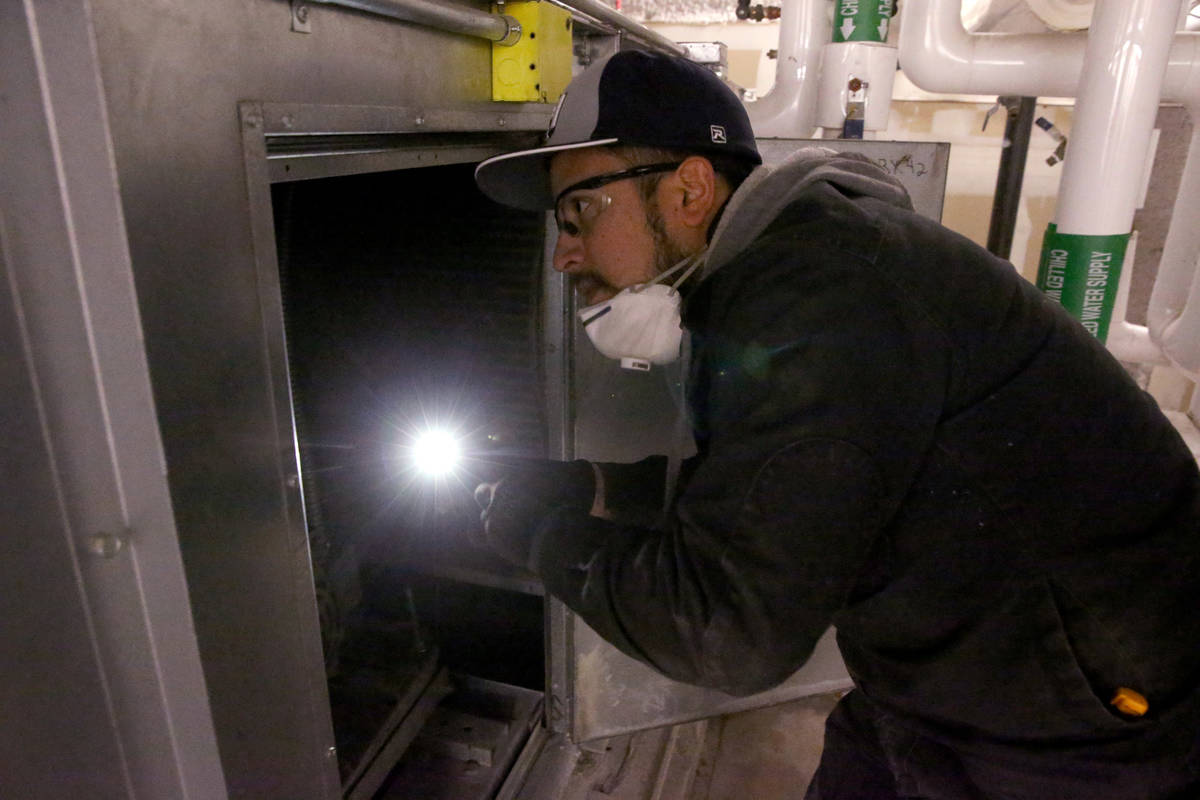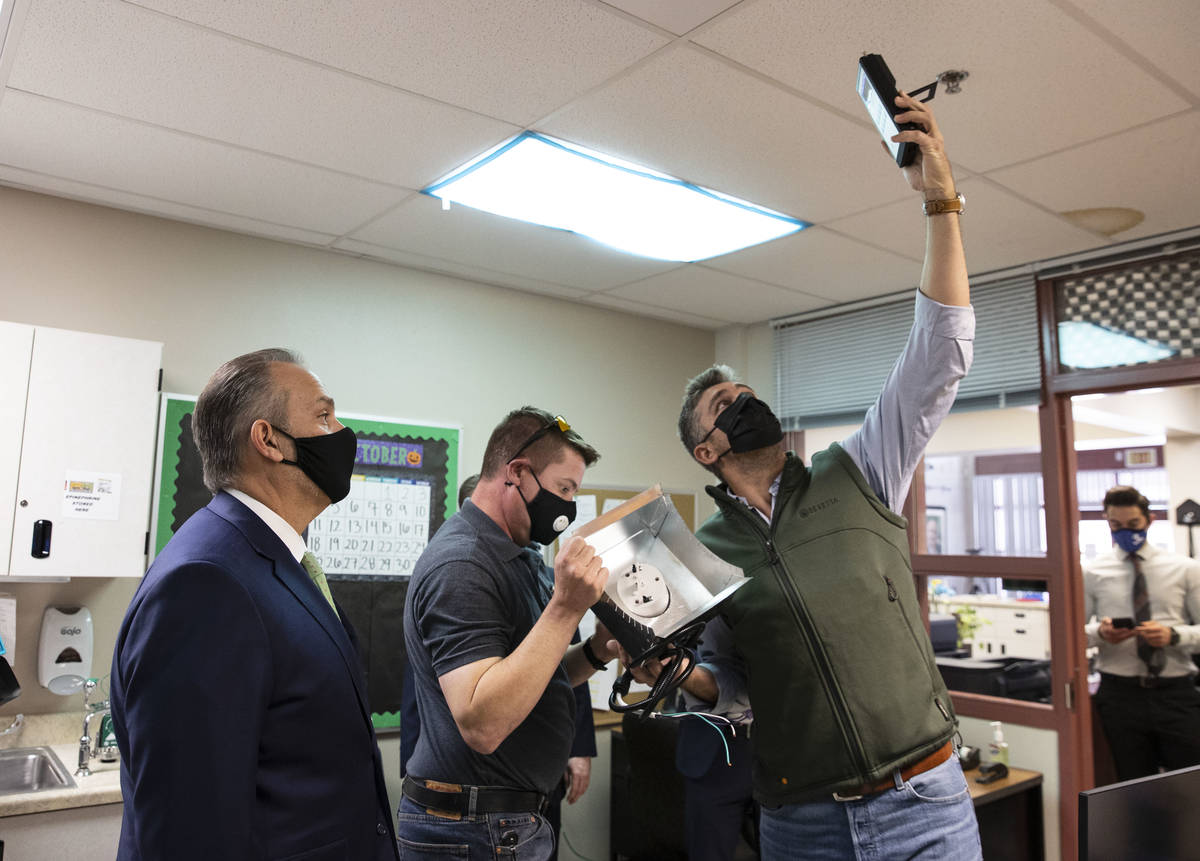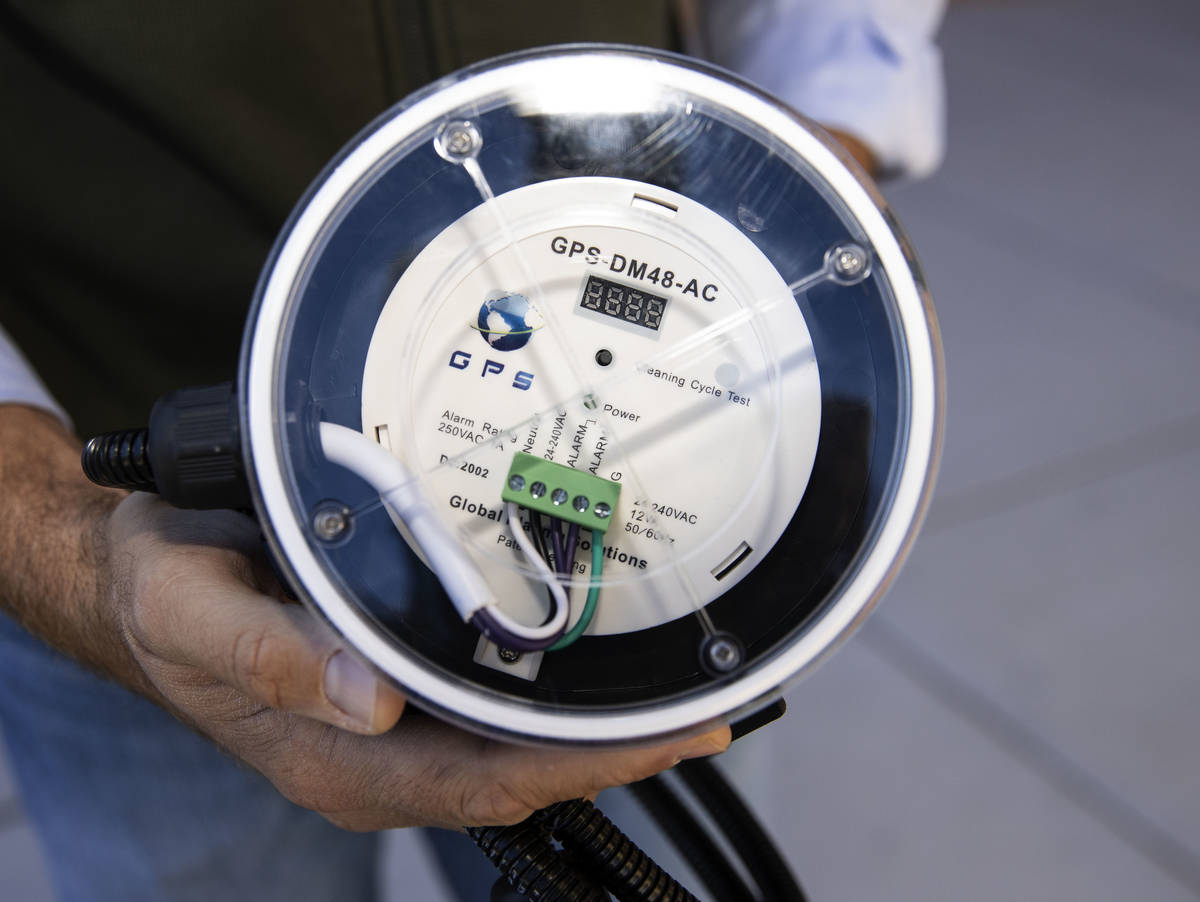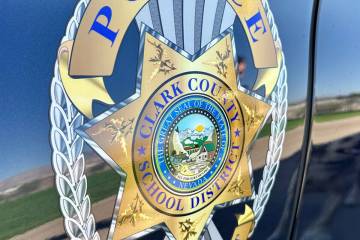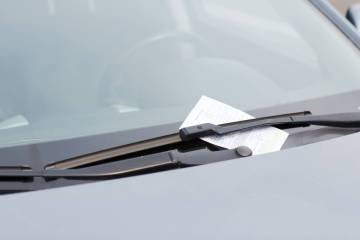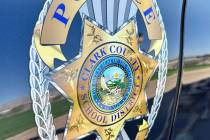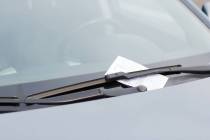Clark County school buildings being prepared for students’ return
With preparations underway to reopen Clark County School District buildings for the first time since March, the district’s facilities are back in the spotlight.
Ranging in age from a few months to nearly 100 years old, the 400 buildings occupied by schools and other district operations have a $7.9 billion need for what the district calls “modernization, life cycle and equity updates,” that includes deferred regular maintenance.
By late 2019, they also amassed a backlog of around 15,000 maintenance requests for HVAC, plumbing and structural repairs and earned a stark warning from then-facilities chief David McKinnis that some were “dangerously close to imminent failure.”
COVID-19 has hastened that day of reckoning, as the health of school buildings will be critical to keeping students and staff safe and socially distanced when young students return to the classroom for the first time in nearly a year on March 1.
The school district says workers have been on campuses throughout building closures to reduce the maintenance backlog, keep up facilities and improve ventilation critical to mitigating the spread of airborne germs like the new coronavirus.
This ongoing work nearly has halved the maintenance backlog from 15,000 to 8,000 requests, according to the district’s current chief facilities officer, Jeff Wagner, who replaced McKinnis in 2020.
‘Can’t lock the door and walk away’
“You can’t just lock the door and walk away and expect your building to be fine,” Wagner said.
The deferred maintenance of public schools is a national problem exacerbated by a pattern of disinvestment triggered by the Great Recession, which began in December 2007.
A June 2020 report from the Government Accountability Office found that half of public school districts surveyed the year prior needed to update or replace multiple systems in their schools.
An estimated 41 percent needed to update heating, ventilation and air conditioning systems in at least half their schools, which already had caused leaks, damage and even school closures long before the pandemic, according to the report.
Wagner said much of the work to reduce the Clark County School District’s maintenance backlog has focused on those HVAC systems, along with plumbing. Many of the remaining requests involve asphalt work, he added, which can mean anything from a small crack to a major fissure.
HVAC a priority
As school buildings prepare to reopen, the facilities division’s primary focus is improving indoor air quality, according to Wagner.
To this end, all air filters have been changed and upgraded to improve their ability to catch smaller particles, he said. Newer HVAC systems that could handle them received filters rated at 13 in terms of Minimum Efficiency Reporting Value (MERV), but all the new filters are rated 8 or higher, district representatives said.
The district also expects to complete by mid-February a $1.7 million initiative to install ionization filters in school nurses’ offices and sick rooms meant to neutralize pathogens like the coronavirus in the air.
Work also is ongoing to replace worn carpet throughout district buildings, Wagner said. In addition to being beyond its useful life, the carpet, when not properly maintained, can have a negative impact on indoor air quality. According to the Environmental Protection Agency, carpet acts as a reservoir for dust, dirt, pollen, mold spores, pesticides and other materials.
“Some studies indicate that poorly maintained carpet can release significant quantities of particles into the air during the course of daily activity,” the agency’s website states.
Good ventilation is key to mitigating the spread of COVID-19 indoors, according to guidance from the Centers for Disease Control and Prevention, but it’s also one of the top concerns among Clark County educators, who say they teach in classrooms where the windows can’t be opened and the HVAC system struggles on hot days.
Rancho High teacher Robert Cowles plans to make his own freestanding air filter with around $150 worth of materials — four MERV-13 filters, a box fan and some cardboard — before he’s called back into the classroom.
But rather than put the onus on teachers to buy or make their own, he said, the district should publicly identify which school systems couldn’t get the higher-rated filters, and provide standing purifiers instead.
He said the HVAC systems themselves also should be rebalanced.
“There’s always one room that feels like a wind tunnel while the others are stuffy,” he said.
Plumbing and other considerations
Equally important to ventilation is plumbing, Wagner said, including ensuring that all sinks function and have hot water for hand washing.
With the majority of staff working from home from Gov. Steve Sisolak’s “pause” order on Nov. 23 through Jan. 25, the empty buildings were susceptible to a buildup of stagnant water that can breed bacteria, Wagner said. To prevent this, custodial teams have been on campuses weekly to “exercise” the buildings — flush the toilets, run the sinks and check for damage.
Even with few people on campus during the fall semester, the district saw approximately 1,200 maintenance requests per week — or two to three per facility every week.
Asked if he was concerned that future budget cuts could set the maintenance gains back again, Wagner said his immediate worry is filling existing openings in his department. Based on the district’s square footage, Wagner said that he could use another 66 positions but that it was difficult to compete economically with private companies and other local government agencies.
Federal aid could help districts make further inroads into their maintenance backlogs and avoid another backslide because of cuts. Members of Congress, including Democratic Sen. Jacky Rosen of Nevada, on Thursday proposed $130 billion in funding to address public school facilities that pose health and safety risks to staff and students. Under the Reopen and Rebuild America’s Schools Act, states also would be required to track the condition of public school facilities — something that’s not currently done in most states.
Wagner said collaboration with other districts across the country that have already carried out reopenings has helped his team test best practices, the most critical of which are distancing and hand-washing.
Officials also have learned that districts everywhere are having the same challenges with their facilities and that there’s an aspect of trust to maintenance, too, Wagner said.
“It’s one thing for all of us to know we’ve changed our air filters,” he said. “But we have to communicate that to the end user and make them comfortable.”
Hybrid and limited return
Though the timing of a return for all 307,000 Clark County School District students and some 40,000 staff is still uncertain, schools are preparing to welcome back prekindergarten to third grade students for hybrid instruction, with small groups of students in older grades for voluntary extra support.
Likely the most apparent facilities changes to students and staff returning to campus under the hybrid model will be the spacing inside classrooms as detailed in the district’s reopening plan, Wagner said, with all desks facing forward and spaced 6 feet apart.
It won’t be business as usual outside the classroom, either. Notices of COVID-19 protocols will be posted at controlled entry and exit points, and schools are to develop plans for one-way passing hallways. In most elementary schools, lunch will take place in classrooms rather than the cafeteria. Playgrounds won’t be open during the initial return.
Each school also must have a sick room — in some cases, a converted classroom — that must have its own supplies, sink and bathroom separate from the health office and other areas of the school.
Along with the changes, reopening in some capacity also will be a point of pride for schools that have benefited from $400 million in capital investments during the school year, including a program to renovate 29 campus football fields highlighted by Superintendent Jesus Jara in his State of the Schools address.
“We’ve upgraded football fields — something you would say, ‘Well why are you doing that?’ Well, it’s a perfect time. Something that needed to be done for the safety of our children,” he said.
Jara also acknowledged the need to dig out of the maintenance backlog.
“We will get there,” he said. “We have to be more proactive to address our needs.”
At Sierra Vista High School, Principal John Anzalone said the school’s facilities upgrades during the closure included a new football field, new carpet throughout the school and a freshly painted mural.
“I’m excited to get the kids back because I think they’ll be excited to see how the school looks,” he said.
^
Contact Aleksandra Appleton at 702-383-0218 or aappleton@reviewjournal.com. Follow @aleksappleton on Twitter.
WHAT NEEDS REPAIR?
You can be our eyes in communities as we look into deferred maintenance decisions by government agencies.
— Do cracked, uneven sidewalks make your morning walk a dangerous journey?
— Is your local park looking unkempt?
— Does your child's school become uncomfortably hot when the air conditioning fails?
This is your chance to let us know what needs fixing. To submit suggestions, photos or video and your contact information, go to:
▶ reviewjournal.com/tag/state-of-disrepair/



